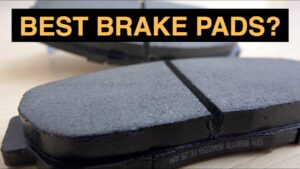Do you know how to bleed the master cylinder without bench bleeding? The process is pretty simple and easy with few steps, all followed sequentially. Although you can bleed the master cylinder without taking it out of the car, the most often people choose this way to deal with the situation.  Here, in this article, we will discuss the master cylinder, its bleeding process, and certain frequently asked questions on the related topic. So, let’s begin with the discussion.
Here, in this article, we will discuss the master cylinder, its bleeding process, and certain frequently asked questions on the related topic. So, let’s begin with the discussion.
Table of Contents
What Is Master Cylinder In Vehicles?
 The master cylinder is a component in the car which is a part of the braking system. It drives the pressure generated by the brake pedal to the braking mechanism at your vehicle’s wheel. when you press down on the brake pedal, the resultant force pushes a piston through the brake cylinder, converting the force into hydraulic pressure.
The master cylinder is a component in the car which is a part of the braking system. It drives the pressure generated by the brake pedal to the braking mechanism at your vehicle’s wheel. when you press down on the brake pedal, the resultant force pushes a piston through the brake cylinder, converting the force into hydraulic pressure.
How To Bleed Master Cylinder Without Bench Bleeding?
Bleeding the master cylinder is the procedure of removing the air from the hydraulic lines of the vehicles. Along the side of a master, bleeding brake bleeding is also essential to ensure the proper operation of the brakes. Air bubbles in the brake lines will also decrease the amount of force the brake pedal applies to the brake pad at each wheel.
There are certain steps for bleeding the master cylinder without removing it from the car or without bench bleeding. So, let’s discuss each of the steps in detail.
1. Gather Or Assemble Your Supplies
 The very first step in bleeding the master cylinder is to assemble all the required things and instruments necessary for the process. For this purpose, you need a brake bleed screwdriver or wrench to loosen the screws that hold the hoses. Another thing you need is pliers to pinch the hose attached to your master cylinder.
The very first step in bleeding the master cylinder is to assemble all the required things and instruments necessary for the process. For this purpose, you need a brake bleed screwdriver or wrench to loosen the screws that hold the hoses. Another thing you need is pliers to pinch the hose attached to your master cylinder.
Next, WD-40 or any other water-displacing solvent is required to get rid of extra oil and other contaminants while unscrewing. You must perform all the steps with the help of another person as he or she will play a great role in assisting you.
2. Jack Up The Vehicle
 After going through the above steps, the next thing you must do is to jack up your car. It would help you to get underneath the car and work there with the master cylinder.
After going through the above steps, the next thing you must do is to jack up your car. It would help you to get underneath the car and work there with the master cylinder.
Be cautious in such steps as they are pretty risky. However, don’t forget to immobilize the car by blocking the wheels. Also, make sure that the vehicle won’t roll by parking it on a flat surface.
3. Place An Empty Container Or Jar Underneath
 In the very next step, you need to put a jar or container underneath the master cylinder’s bleeder nozzle for the hose attachment. The purpose of the container is to collect all the extra brake fluid from the master cylinder of the vehicle.
In the very next step, you need to put a jar or container underneath the master cylinder’s bleeder nozzle for the hose attachment. The purpose of the container is to collect all the extra brake fluid from the master cylinder of the vehicle.
Therefore, you need to connect the hoses to the container or jar whatever you have taken in some way. Once you begin or start pumping, there will begin flailing about and the spray brake fluid everywhere if they are not anchored down in some way. Next, call your helper or assisting the person to slowly pump your brake pedal several times.
4. Detach The Hoses Connecting The Master Cylinder
 Detaching would help you in isolating the cylinder and keeps you from bleeding your brakes also. While coping up with the bleeding process of the master cylinder, don’t mess with the brakes of your vehicle. Before, your helper releases the pedal, put or tighten the hoses back.
Detaching would help you in isolating the cylinder and keeps you from bleeding your brakes also. While coping up with the bleeding process of the master cylinder, don’t mess with the brakes of your vehicle. Before, your helper releases the pedal, put or tighten the hoses back.
Next, examine the brake fluid. For this, you need to check whether the air consists of an air bubble or not. Hence, it’s important to have a container or jar to collect the fluid. And this collection of fluid will help you in determining or have an idea about the fluid in the brakes.
5. Reattach The Hoses To The Master Cylinder
 After completing all the steps mentioned above, switch to the last step of the procedure. Here, you need to reattach all the hoses of the master cylinder which you initially lose. Please don’t forget to do the task otherwise it may lead to air back into the master cylinder.
After completing all the steps mentioned above, switch to the last step of the procedure. Here, you need to reattach all the hoses of the master cylinder which you initially lose. Please don’t forget to do the task otherwise it may lead to air back into the master cylinder.
Next, ask your helper or person with you to release the pedal and end that particular task. Repeat it until the air is out of your master cylinder. However, don’t forget to continue the topping of the cylinder with the brake fluid. Otherwise, you need to do the procedure again because of the entrance of air into the cylinder.
What Happen If You Don’t Bleed Your Master Cylinder?
If you don’t bleed or fail to bleed the master cylinder then you lose the chance of not being able to get the unit to prime enough to ever begin pumping. As a result, if the master cylinder is not bled then it would take at least twice as long to bleed the system with no guarantee of complete removal of air from the system.
Can You Bleed Brakes With The Bad Master Cylinder?
As if to this question, the answer is straightforward no. As there should always be someone present while bleeding the brakes to get the air out of the lines. And all this is performed with the help of brake fluid down the lines until the new brake fluid forces the air out of the lines.
How Much Does It Cost To Replace The Master Cylinder?
the average cost of replacing the master cylinder may range between $300 to $500. The labor cost is estimated at around $200 to $250, and each part cost being between $100 to $210. However, the prices may differ from place to place and model to model of the vehicle.
Conclusion
We hope the information mentioned above help and guides all the readers to deal with the situation effectively. We also expect that by the end of the topic you know how to bleed the master cylinder without bench bleeding.
If your doubts or queries regarding the topic persist, please comment below in the comment section. We will surely answer all your questions as quickly as possible.


